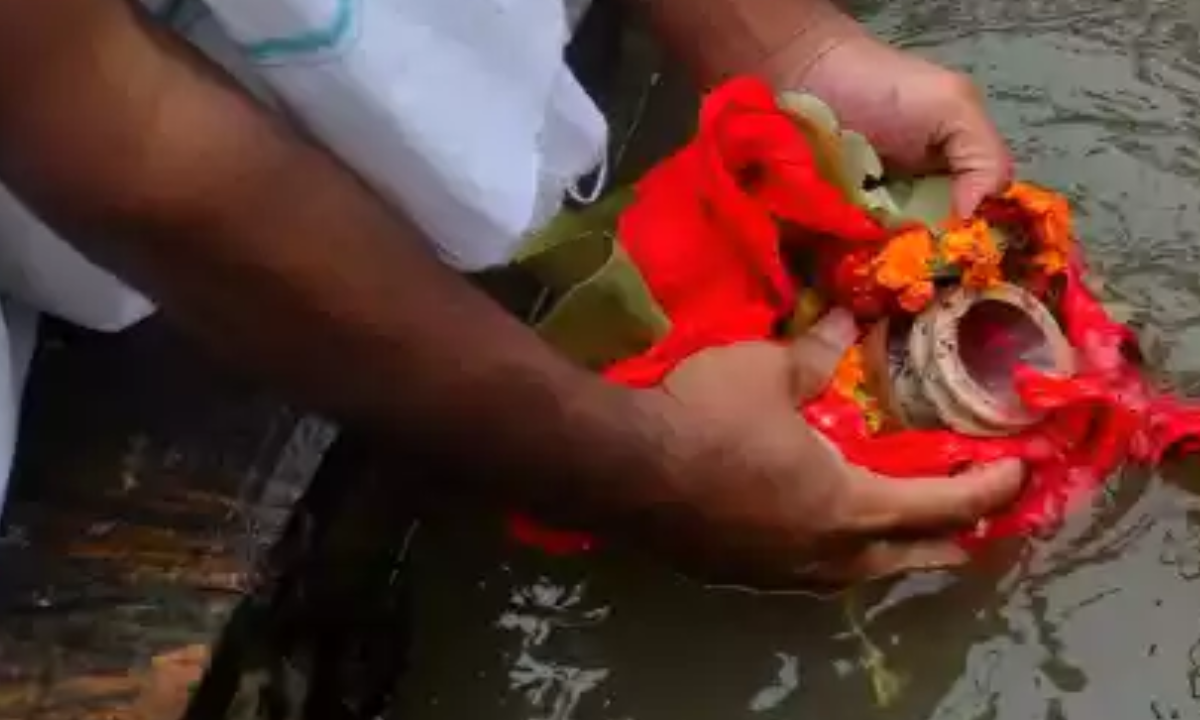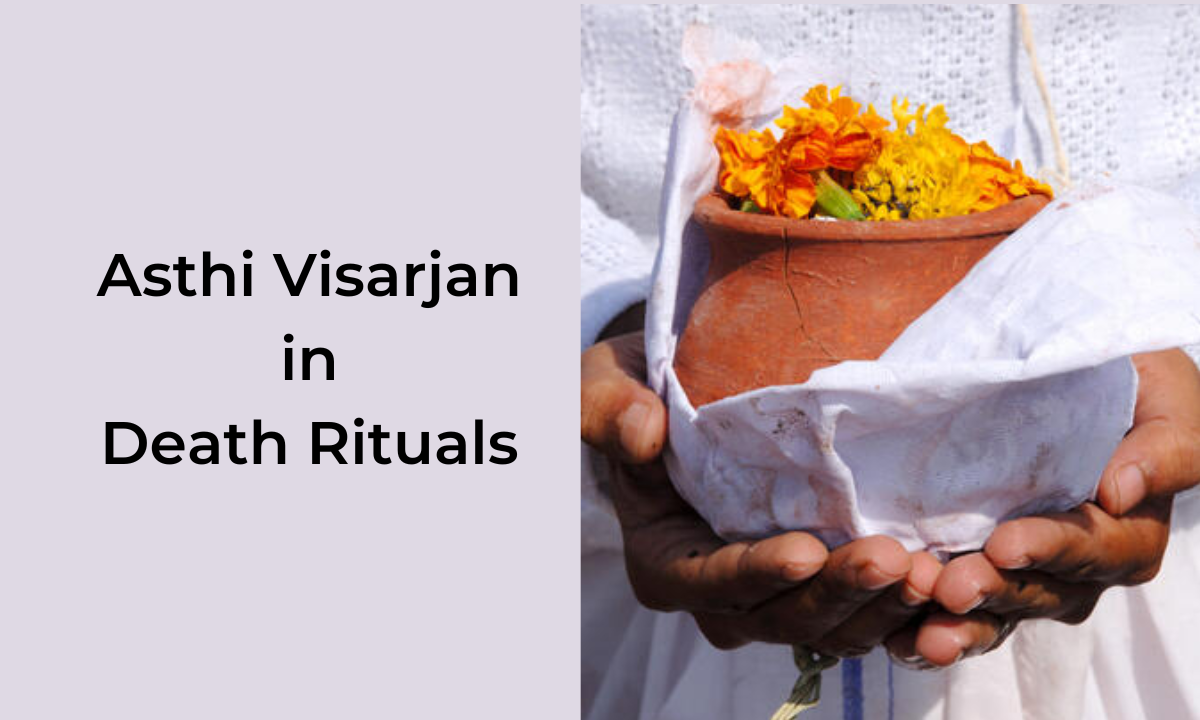Every society throughout history has believed in spiritual practices related to life and natural endings. Most sacred ceremonies see death as something that closes one path of life but opens another path. Within Hindu spiritual practices, people recognise that the soul travels after death and they perform ceremonies to support that journey. One important ritual out of many is Asthi Visarjan.
What Is Asthi Visarjan?
When mortal remains receive sacred immersion this practice is called Asthi Visarjan. Asthi Visarjan is when you put cremated human remains into holy water, usually a river. Religious leaders believe this ceremony sends the soul on a proper journey toward peace.
People disperse their loved one’s ashes into special water spaces, like the Ganges, to help their departed bodies return to nature’s cycle.
Knowing the Purpose of Asthi Visarjan
Everything done in a religious ceremony matters. According to Hindu belief, a departed soul continues its immortal existence and enters a higher plane in the cosmic world. Basic rituals help our soul move forward toward its cosmic path while letting go of the earth below. Here is why Asthi Visarjan is considered indispensable:
1. Ensuring the Attainment of Moksha (Liberation)
The main aim of Hinduism is to reach Moksha – the final release that breaks free from returning to Earth again. Hindus believe a soul gets free from its never-ending circling process when its body decay is respectfully sent to a holy water burial place. Practicing Asthi Visarjan helps families steer the soul towards enlightenment.
2. Our bond with planetary elements helps family members support their relative’s soul’s onward path
According to Hinduism, living on this earth means finding a balance between our five main links to the natural environment—land, water, fire, air, and space. We send last respects and place the body’s pieces back into nature’s elements through cremation and Asthi Visarjan – scattering water over the ashes. Our attitude toward nature shows that people and the universe are linked and related to each other.
3. A Token of Respect and Love
For families, returning body remains to water is about both their heart and spiritual needs. The ceremony represents how families honour and show appreciation for their loved ones. After saying farewell through prayers the family sends the soul to its next destination by placing ashes into holy water.
What Specific Locations Serve for Ash Immersion?

Families follow their traditional beliefs by performing Asthi Visarjan ceremonies at spiritual rivers and water sources. Some commonly chosen places include:
1. Ganges River: The Ultimate Destination
People view the Indian river Ganges as one of the most sacred rivers in the Hindu religion. Indian families from both Indian and foreign countries take Ganga’s holy waters to submerge the ashes of their departed family members. According to faith, the Ganga has a special power to purify souls as they progress toward spiritual freedom.
2. Major Water Systems Throughout the Nation
Besides the Ganges, the Yamuna Godavari Brahmaputra and Narmada all qualify as holy locations for Asthi Visarjan. Temple locations in different cities let families do this custom and their staff helps them through the process.
Step-by-Step Guide: Follow these steps during Asthi Visarjan
People carry out Asthi Visarjan through various actions and devotions to preserve the ritual’s sacred nature. Here’s how it is usually performed:
1. Collecting the Mortal Remains
As part of tradition, family members bring the cremated bones back to their yard from the cremation site. They store the ashes in a special pot called an urn.
2. Choosing a Sacred Place
The family picks sacred water bodies or rivers to conduct the Asthi Visarjan ritual. Main river cities along the Ganga like Haridwar Kashi Prayagraj and Rishikesh serve as locations for this important practice.
3. Performing Prayers
Before dipping ashes in water priests and family leaders say prayers as well as sing religious songs to ask for good energy for the departed spirit.
4. Immersing the Ashes
The household places the ashes directly into the rushing water during a sacred ceremony. On this special occasion, families pour water over their bodies while offering food and flowers to show their gratitude.
5. Offering Food and Charity
After rituals family members share their wealth with deprived people to help purify the departed one’s karmic cycle.
Scientific and cultural values of Asthi Visarjan
The ceremony performs both sacred spiritual duties while serving cultural and environmental preservation goals. By participating in this action we come to understand our deep connection with nature.
1. Returning to Nature
Through ash immersion, the ritual shows that life appears from nature and returns to it through a natural cycle.
2. Family Bonding and Healing
When family members attend funeral ceremonies they help each other overcome grief and create a final goodbye. Marginal families unite as they perform the ashes burial ceremony during this important life event.
3. Promoting Environmental Awareness
While this practice stems from spiritual belief it leads to talks about its effect on the environment. Official organizations promote earth-friendly funeral methods by providing biodegradable ash tubes to save the environment from harm.
Misconceptions About Asthi Visarjan
Although Asthi Visarjan stands as an essential cultural practice, widespread errors exist regarding its proper execution. These include:
1. It Can Only Be Done in India
Asthi Visarjan must follow specific sacred intentions and rituals no matter the chosen water body.
2. Anyone Can Conduct the Ritual
In past times only the eldest son or the male head of household was expected to lead Asthi Visarjan ceremonies. Current social changes allow family members to lead these rituals rather than maintain traditional restrictions.
Modern Adaptations to Preserve Tradition
Modern families transfer traditional Asthi Visarjan services practices to their current living areas while maintaining ritual respect. Some examples include:
1. Virtual or Proxy Services
People who cannot go to holy cities regularly hire professional services that perform these rituals on their behalf.
2. Biodegradable Urns
More people now choose biodegradable urns that safely break down in water because they care about protecting nature. Traditional practices support ceremonial changes that help protect our planet.
Conclusion
In Hindu belief, death moves people beyond this life for a new experience. This important ceremony benefits both the family members and deceased loved ones. The ceremony offers people relief from grief by calming their spirits and bringing peace to their souls. As families put ashes into holy water they trust their loved one’s spirit will reach peace and endless harmony.
Whether we interpret Asthi Visarjan through spiritual, cultural, or even scientific lenses, its purpose remains clear: Families show their respect and deep love by treating life’s ending with proper behavior. These ceremonies unite families across history and teach them how to show respect to deceased ancestors through clean hearts and gratitude.
Kaashimukthi stands as a respected company for funeral services in Bangalore that provides professional help for various rituals including Asthi Visarjan to let departed souls go at peace.

Madhu is an Entrepreneur, a Mentor, a Writer and an Aspiring Car Race Driver. He is Deeply passionate about leveraging Technology and Human Centred Design to make complex care and End of Life Planning easier. With the ultimate aim of Improving the quality of Life in the Twilight years. Madhu is highly educated and Alumni of IIM-Bangalore, Sikkim Manipal University and Bangalore University besides a Rich Industry Experience in the field of Product Management, Design, Supply chain, Finance, Commercial Management and Funeral Services.

